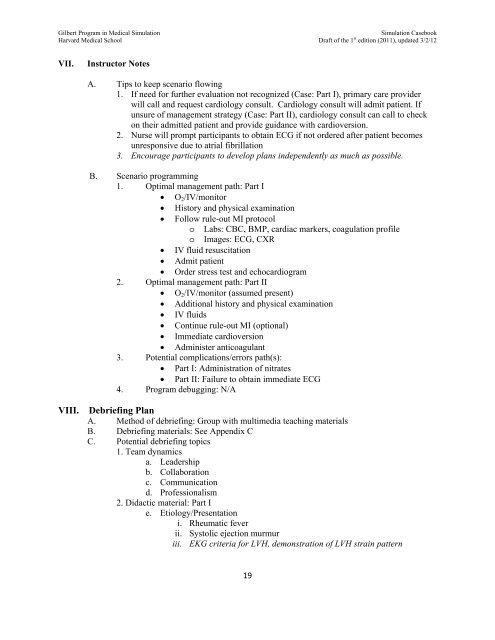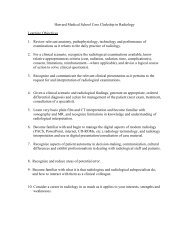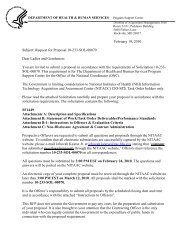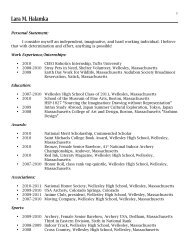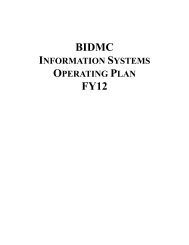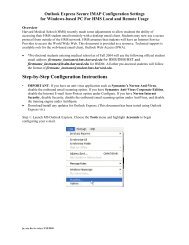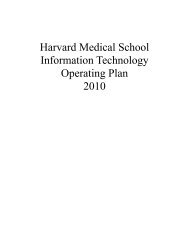SIMULATION CASEBOOK - MyCourses
SIMULATION CASEBOOK - MyCourses
SIMULATION CASEBOOK - MyCourses
You also want an ePaper? Increase the reach of your titles
YUMPU automatically turns print PDFs into web optimized ePapers that Google loves.
Gilbert Program in Medical Simulation<br />
Simulation Casebook<br />
Harvard Medical School Draft of the 1 st edition (2011), updated 3/2/12<br />
VII.<br />
Instructor Notes<br />
A. Tips to keep scenario flowing<br />
1. If need for further evaluation not recognized (Case: Part I), primary care provider<br />
will call and request cardiology consult. Cardiology consult will admit patient. If<br />
unsure of management strategy (Case: Part II), cardiology consult can call to check<br />
on their admitted patient and provide guidance with cardioversion.<br />
2. Nurse will prompt participants to obtain ECG if not ordered after patient becomes<br />
unresponsive due to atrial fibrillation<br />
3. Encourage participants to develop plans independently as much as possible.<br />
B. Scenario programming<br />
1. Optimal management path: Part I<br />
O 2 /IV/monitor<br />
History and physical examination<br />
Follow rule-out MI protocol<br />
o Labs: CBC, BMP, cardiac markers, coagulation profile<br />
o Images: ECG, CXR<br />
IV fluid resuscitation<br />
Admit patient<br />
Order stress test and echocardiogram<br />
2. Optimal management path: Part II<br />
O 2 /IV/monitor (assumed present)<br />
Additional history and physical examination<br />
IV fluids<br />
Continue rule-out MI (optional)<br />
Immediate cardioversion<br />
Administer anticoagulant<br />
3. Potential complications/errors path(s):<br />
Part I: Administration of nitrates<br />
Part II: Failure to obtain immediate ECG<br />
4. Program debugging: N/A<br />
VIII.<br />
Debriefing Plan<br />
A. Method of debriefing: Group with multimedia teaching materials<br />
B. Debriefing materials: See Appendix C<br />
C. Potential debriefing topics<br />
1. Team dynamics<br />
a. Leadership<br />
b. Collaboration<br />
c. Communication<br />
d. Professionalism<br />
2. Didactic material: Part I<br />
e. Etiology/Presentation<br />
i. Rheumatic fever<br />
ii. Systolic ejection murmur<br />
iii. EKG criteria for LVH, demonstration of LVH strain pattern<br />
19


